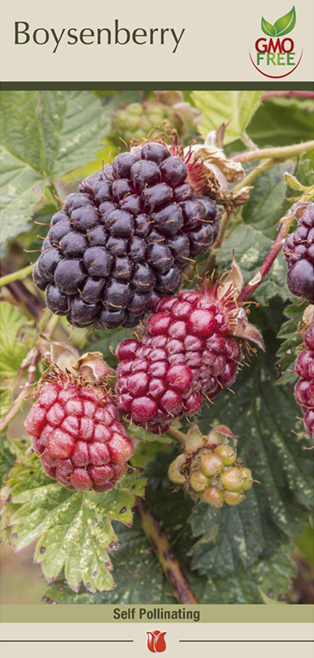Netherland Bulb Company
Known for producing Premium Holland Bulbs 1-800-78-TULIP

Photo © Netherland Bulb Company, Images may not be copied,
altered or reproduced without express written consent.
altered or reproduced without express written consent.
Boysenberry
Rubus ursinus
There is nothing quite as unique as a boysenberry, offering up both the dark color and syrupy sweetness of a blackberry with the tart richness of a raspberry running through the background. A true culinary delicacy and prized ingredient for preserves, desserts, and sauces to accompany grilled or roasted meat. Self-pollinating.
1) Dig a hole two times the width of the root ball, gently remove packing material from root ball.
2) Set root ball in hole, making top even with ground level, fill in around root ball with soil mix to ground level, water to settle mix and add more soil if needed.
3) Form a water basin around the plant with a mound of soil, water once again filling the water basin.
4) Add a 1/4" layer of mulch to conserve moisture and water thoroughly once to two times weekly until plant is established.
Characteristics:
Bloom Time:
Harvest early summer to fall
Mature Height:
240-300 In
Hardiness Zone:
4-9 Find your zone
Exposure:
Full Sun
Features and Usage:
Homeowner Planting and Maintenance Tips:
Due to their short shelf life once picked, the only way to enjoy fresh boysenberries is to grow them yourself! They are easy to grow in full sun in well-drained soil.
We have done our best to describe this plant as accurately as possible, however, different climates
and growing conditions in different parts of the country will affect height, bloom time, and color.

